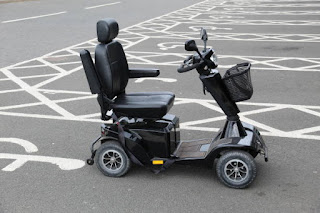How to Use a Mobility Scooter?
A wide variety of mobility aids is used by people with impairments, including walkers, canes, crutches, braces, and electric wheelchairs or scooters.
Mobility scooters can enhance elders' and young adults' quality of life, offer other forms of transportation, and facilitate getting around. Seniors and young adults with impairments or mobility issues should be able to ride with freedom and ease after receiving instruction on how to use a mobility scooter.
Mobility scooters have three or four wheels and an electric motor for propulsion. They give people the capacity to move around and explore with ease both indoors and outside. The scooters include a smooth backrest, plenty of legroom, and a storage area, among other things. They may also be rapidly disassembled for storage or long-distance travel.
Why Should You Learn to Drive a Mobility Scooter?
Safety comes first, which is why it's critical to understand the characteristics of the mobility equipment you're considering getting, as well as the degree of power it has, as well as safety measures such as emergency brakes, spare wheels, a battery, and an LED light in the case of an emergency.
Protect yourself from potential accidents, liabilities, or risky practices such as distracted driving.
Head and neck injuries, spinal cord injuries, and other life-threatening injuries are some of the major hazards connected with operating mobility scooters in Canada without sufficient training.
Depending on the circumstances, different parties (the driver of the motorized scooter) or the driver of a vehicle may be held accountable for injuries incurred by either party in a collision or accident.
It is no surprise that mobility scooter-related incidents are far more common than in the past, given the rising demand for motorized devices to assist persons with mobility difficulties.
According to a paper titled "Mobility Scooter Accidents - Need for Preventative Action" published by Clinical Medical Reviews and Case Reports, the increase in the number of seniors creates a demand for alternative motorized scooters for various medical problems to help in mobility.
Driving Lessons and Mobility Scooter Operation
Motorized
scooter training is essential before using a mobility scooter for the first
time. Consider taking driving classes in your town or consulting with
occupational therapists who can assist you in navigating the functions of your
wheelchair or power mobility equipment.
A recent report titled "Motorized mobility scooters - The use of training/intervention and technology for improving driving skills in aging adults - A Mini-Review" highlights the numerous benefits of using motorized mobility scooters as well as some of the risks associated with improper use, which can result in death or injury.
The paper examines and notes that basic community-based training and intervention approaches, as well as new technologies to enhance the maintenance of a motorized mobility scooter and give ongoing help to the user, might increase driving performance and safety.
Some institutions, like the Department of Transport, have set aside funding for mobility driving centers in order to encourage more intervention and mobility scooter driving training classes for the elderly and those with impairments.
According to Access & Mobility Professional, the group assists clients in receiving intervention and wheelchair and scooter exams from professional occupational therapists.
The main guidelines for riding motorized scooters
With the number of mobility scooter-related incidents on the rise, it is critical to yield to pedestrians and follow the same regulations as drivers to avoid injuries and accidents.
Although a wheelchair or scooter does not need a license plate or registration, it is still necessary to learn and follow traffic laws.
● Drivers of mobility scooters Seniors and
people with disabilities can drive at speeds of up to 30 miles per hour on the
road.
● It is not suggested that you ride your
motorized scooter on a busy road or a road designated for cyclists.
● The
user is required to use the device at pedestrian traffic speeds.
● Identifying specified areas, terms, or situations (if any) in which the devices cannot be accommodated.
According to
the American Disabilities Act, "people with disabilities have the freedom
to pick whichever mobility device best matches their needs," which means
you may choose whether a wheelchair or a motorized wheelchair is better for
your mobility needs.
Conclusion


.jpg)

Comments
Post a Comment